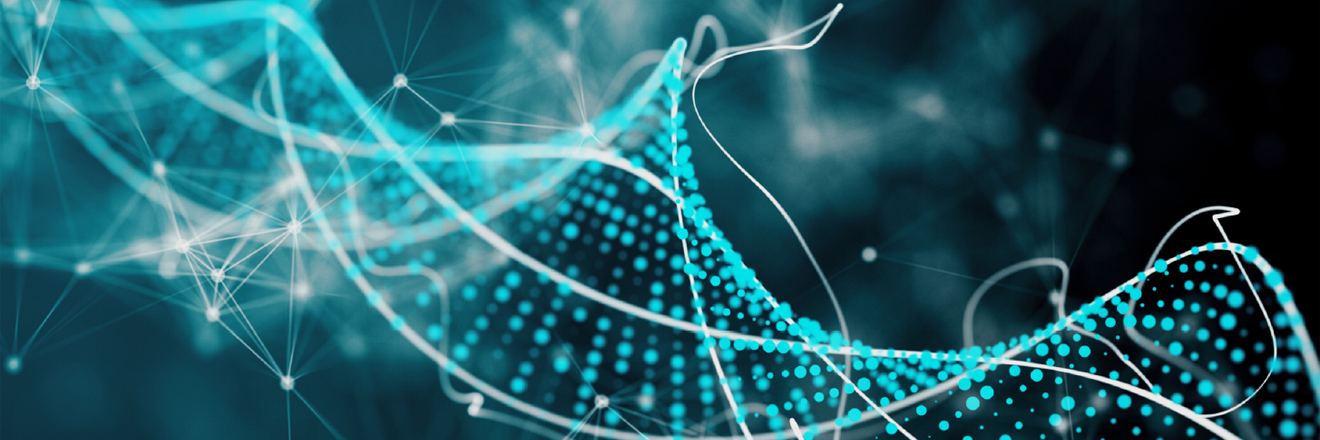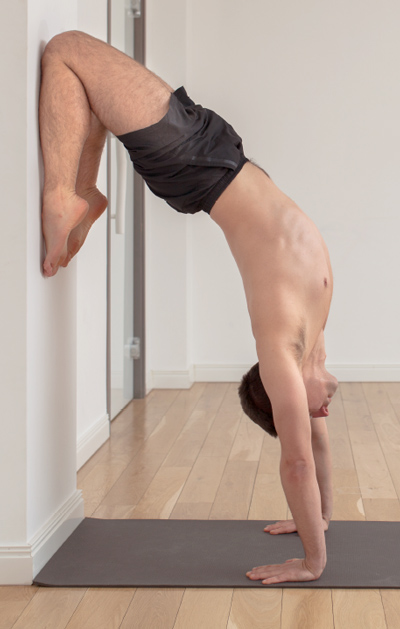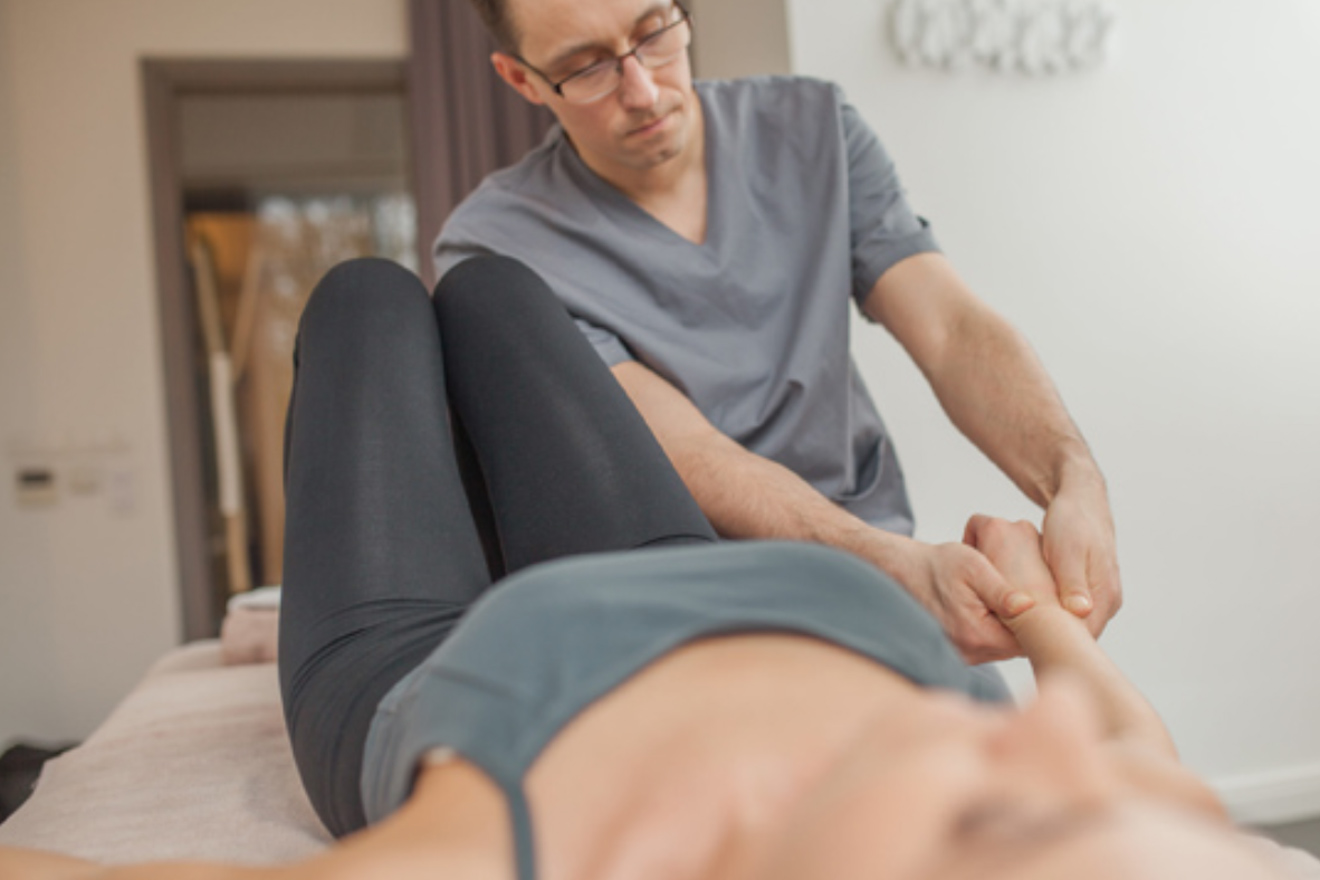Written by: Renata Dębicka / Wojciech Cackowski

Within the pages of this concise article, we embark on a journey into the realms of longevity and healthspan, guided by the lens of movement. While we acknowledge movement’s formidable potential in enhancing longevity, we recognize the need for tailored practices. Our purpose is to illuminate the role of Zoga Multidimensional Movement® as a catalyst for longevity, highlighting its focus on essential movement elements vital to our holistic well- being.
Mortality affects all of us. No matter how hard we try to displace this fact, it does not change that we come into this world with a given portion of finite time. Its length is influenced by many factors. Therefore, since time immemorial, man has been looking for a way to survive and stay healthy and active for as long as possible. Lifespan is currently a significant topic of discussion, but the importance of healthspan and the quality of our time here is equally paramount.
The quality of our health significantly influences our lifespan, as the moment our bodies cease to support us and we lose the ability to move and relish life, rapid degeneration sets in.
Modern medicine has been able to dramatically extend human life in recent decades thanks to a number of innovative procedures and technologies. But isn’t length at the expense of quality? Especially if we’re talking about a vision of what our old age should look like. This question is not only for you, but also for the world of research, which has been gaining momentum in recent years to explore the possibilities of human longevity.
Factors that can influence longevity include genetic predisposition, lifestyle, diet, physical activity, environment, socioeconomic factors and more. The goal of longevity is therefore not immortality, but the optimisation of the natural processes and capabilities of the human organism. This also extends the period during which we can savor our lives. Strengthening these natural mechanisms (so that the body is better able to fight disease and ageing) is one of the key success factors that will enable people to live longer and healthier lives and thus have a positive impact on society.
Unlocking the Power of Internal Movement: The Crucial Link Between Body Mobility and Overall Well-being
Before we delve into ways to improve our health and enjoy a longer life, let’s first understand the concept of well-being. There are certain aspects of well-being that are universally recognizable.
A healthy individual possesses an energetic posture and the ability to move freely in space. They have a well-functioning physiology and the capacity for regeneration. Social and emotional engagement with the environment is also a characteristic of well-being, as is consuming
an appropriate amount of food to sustain physiological processes and maintain balance within the body. It is evident that many of these factors depend on how our bodies hold themselves in space and their freedom of movement. When the human body is constrained in its ability to move, it not only impacts social interactions and emotional expression but also affects resilience in facing life’s challenges.
“Movement plays an often overlooked role in longevity. It facilitates transportation within the vascular, lymphatic, and interstitial systems*. The ability of bodily structures to move and glide against one another is essential for maintaining efficient transport pathways, ensuring proper nourishment, and supporting immune system protection.”
Movement plays an often overlooked role in longevity. It facilitates transportation within the vascular, lymphatic, and interstitial systems*. The ability of bodily structures to move and glide against one another is essential for maintaining efficient transport pathways, ensuring proper nourishment, and supporting immune system protection. The interstitial spaces, which serve as a communication network throughout the entire body, play a vital role in immunity, healing, and regeneration.
Movement is a key factor in promoting our health and positively influencing both our physical and mental well-being. We have all heard this mantra countless times. However, what if there is another form of movement that occurs internally within our bodies, which is crucial for the proper functioning of our anatomical structures? This movement relies on the relative gliding abilities of structures within our body.

The Dynamic Interplay of Body Layers: Unveiling the Biomechanics of Human Movement
According to existing scientific results, it has been proven that movement must take place in all layers of the body structures. Movement is essential for metabolism, physiological processes, neurological stimulation and the ability of the body to distribute the load of each task among all elastic structures. The tissues of anatomical structures such as muscles, nerves or blood vessels, have the ability to elongate and stretch. At the same time, however, glide must also be maintained in relation to each other or to adjacent structures (the so-called principle of relative motion**). All these structures are surrounded by fascia and there is a constant movement between them.
If this function is disrupted, than pain, limited mobility and other problems related not only to the musculoskeletal system can occur. In the case of chronic problems, this is often in a much more distant area from the origin of the dysfunction.
The fascia, as mentioned above, are responsible for this phenomenon. These not only envelop individual structures, but allow them to glide together and at the same time connect muscles into functional movement chains. This system, is very sensitive and if a change occurs in one place, then this stimulus is transferred (using already mentioned chain) to another area of the human body. By understanding the principles of movement between the different layers of the body, we could find a new way of looking at the principles of the biomechanics of human movement. As results of early research
“All these structures are surrounded by fascia and there is a constant movement between them. If this function is disrupted, than pain, limited mobility and other problems related not only to the musculoskeletal system can occur.”
already suggested, the tissues responsible for movement at a particular joint may behave in quite different ways depending on the location of the initiated movement. In practice, this means that the restriction in the glide and relative motion of a tissue appears depending on a certain direction. Movement in one direction may be relatively unrestricted, but problems occur when attempting to move in the opposite direction, for example (when we move our hip joint into extension with knee extended will be a different biomechanical relationship to extending a hip with a knee that is flexed). Depending on the direction of movement, we can achieve a better (larger) range of motion. Unilateral gliding abilities of tissues are resulting in a restriction in a range of motion when we move in a way that is using direction of gliding that we lost.

As results of early research already suggested, the tissues responsible for movement at a particular joint may behave in quite different ways depending on the location of the initiated movement.
In practice, this means that the restriction in the glide and relative motion of a tissue appears depending on a certain direction. Movement in one direction may be relatively unrestricted, but problems occur when attempting to move in the opposite direction, for example (when we move our hip joint into extension with knee extended will be a different biomechanical relationship to extending a hip with a knee that is flexed). Depending on the direction of movement, we can achieve a better (larger) range of motion. Unilateral gliding abilities of tissues are resulting in a restriction in a range of motion when we move in a way that is using direction of gliding that we lost.
Taking these principles into account proves to be essential to address the problem of chronic musculoskeletal disorders, especially in today’s rapidly ageing society burdened by diseases of civilization. Among the most widespread ones, we can mention various types of spinal pain, but also other musculoskeletal ailments that contemporary medicine is not always able to cope with.
Answer to this considerations is a movement that is focused creating a shearing forces between specific layers of the body and evoking relative movement in those areas. This introduces us to an innovative concept in the field of manual and movement therapy called Zoga Multidimensional Movement®.
Unlocking Longevity: Zoga Multidimensional Movement® for Balanced Healthspan and Vitality
Zoga Multidimensional Movement® is a personalized practice that delves into the exploration of movement, fostering a more even distribution of forces within the human biomechanics. It facilitates improved alignment and the harmonious interaction of the body’s structure with gravity. By engaging in various movement explorations tailored to individual capabilities, we enhance the ability to allocate movement potential across different anatomical structures. This, in turn, relieves pressure from areas that may otherwise cause pain, discomfort, or strain due to excessive loading. Zoga® serves as a therapeutic process, combining movement explorations with manual interventions to restore balance to areas affected by trauma, injury, inflammation, surgery, or external forces. This approach empowers individuals who struggle to move, transforming them into seekers of movement joy across diverse disciplines, reveling in the use of their bodies as instruments of motion.
Zoga® achieves these objectives through a unique movement approach. By presenting tensional or compressional challenges in specific body regions, followed by a multitude of 3D movement combinations throughout the body, the method encourages layers of muscles, tendons, ligaments, neuromuscular bundles, organs, joints, and fascia to interact in multidirectional gliding motions. This, in turn, restores the freedom of movement, resulting in a more balanced and symmetrical bodily structure within the gravitational realm.
“While the notion that movement is essential for health is a familiar refrain, there is a realm of movement that takes place within our bodies, potentially playing a crucial role in maintaining the health of our bodily structures.”
Our human body operates as a closed mechanical system, engaging with gravity and various external forces as we navigate the world. The capacity to move effectively and interact with our surroundings significantly influences our health, energy levels, and emotional well-being. Maintaining this ability serves as a pivotal component for longevity and overall health.
While the notion that movement is essential for health is a familiar refrain, there is a realm of movement that takes place within our bodies, potentially playing a crucial role in maintaining the health of our bodily structures. Instances abound where individuals sustain injuries from movement practices, hindering their return to activities and jeopardizing their healthy lifestyle. In the context of longevity-oriented movement practices, it is crucial to opt for approaches that minimize the risk of injury. Safety, in this context, has dual facets. First, it pertains to movements resembling sports, where the inherent competitive nature can lead to injuries. Second, it encompasses how movement patterns over time, even slow and repetitive, can lead to injuries if biomechanics are compromised. Inadequate biomechanics can lead to joint space approximation and subsequent issues such as inflammation and joint degeneration. Therefore, a holistic biomechanical understanding should inform the creation of a longevity practice, customized to an individual’s injury history and preexisting lifestyle. This nuanced approach ensures safe movement while promoting lasting health and vitality.

The Importance of Interstitial Fluid Movement: Hydration and Aging
As we age, our bodies experience a loss of water, particularly in the interstitial spaces where water is depleted and collagen binds between body membranes. This change in proportions between collagen, glycosaminoglycans, and water results in reduced mobility and increased adhesion between layers. This natural aging process affects the interstitium. However, maintaining the freedom of movement within our interstitial spaces allows for fluid movement, ensuring proper hydration and slowing down the progression of stiffness and dehydration associated with aging. Zoga® is designed to engage the body’s structures in specific directions, challenging and stimulating all layers to move in relation to their surrounding structures. In the Zoga® concept, practitioners utilize movement and manual interventions to ensure that all structures have the freedom to move and can achieve three-dimensional shape changes. This allows for optimal positioning and movement in relation to neighboring structures, promoting unrestricted movement and efficient transport within the interstitial system.
The Interconnectedness of Body and Mind: Empowering Psyche through Zoga® Practice
Our bodies are not separate from our minds; they are intricately interconnected. Research has shown a strong correlation between restricted movement and various illnesses, both physical and psychological. Zoga® can be a valuable practice for influencing our psyche through body expressions, it encourages individuals to reconnect with their bodies and embrace their physicality.
By engaging in conscious movement and body-centered practices individuals can develop a deeper awareness of their bodies. This reconnection can help counteract the sense of loss that may occur when movement abilities are restricted, allowing individuals to regain a sense of self and identity. Another important aspect that needs to be mentioned is that sense of belonging in a community
is one of the fundamental needs of a human being. Zoga® classes often foster a sense of community and provide a supportive environment for individuals to engage in movement. Being part of a supportive community can counteract the feelings of isolation or disconnection that may arise from a loss of movement abilities. The collective energy and shared experiences can contribute to enhanced psychological well-being and resilience.
Paving the Way to Longevity, Vitality, and Optimal Well-being
In conclusion, the exploration of movement in relation to our well-being and longevity reveals the profound impact it has on every aspect of our lives. From our physical health and posture to our social interactions and emotional expression, movement shapes our experiences and influences our resilience in the face of challenges.
While the importance of external movement is widely recognized, this article has shed light on the often overlooked internal movement. The relative gliding abilities of our body’s structures play a critical role in maintaining a well-nourished and protected system. By allowing for fluid transport within our vascular, lymphatic, fascial and interstitial systems, this internal movement supports our immune function, enhances healing, and aids in regeneration.
Understanding the power of movement opens up new possibilities for optimizing our overall well- being. By embracing a holistic approach that encompasses the external and internal dimensions of movement, we can unlock our body’s potential for longevity and vitality. Through practices like ZOGA Multidimensional Movement®, we can activate and mobilize our tissues, restore optimal function, and enhance our physical and mental health. Zoga® unveils a profound connection between our internal movement and the overall well-being of our bodies. By focusing on individualized exploration, this practice facilitates the harmonious distribution of forces within our biomechanics. Through intentional movement patterns, Zoga® fosters a symmetrical bodily structure, realigning our relationship with gravity and promoting a holistic sense of well-being.
It is important to recognize that our bodies and minds are intricately connected, and movement serves as a bridge between the two. By reconnecting with our bodies through conscious movement, we can develop a deeper awareness of ourselves, counteract the effects of restricted mobility, and regain a sense of self and identity.
As we navigate the challenges of an aging population and prevalent musculoskeletal disorders, embracing the transformative power of movement becomes increasingly crucial. By prioritizing movement and its multidimensional nature, we can pave the way towards a future where longevity is accompanied by a higher quality of life, allowing us to enjoy vitality, freedom of movement, and a deep sense of well-being.
Let us embark on this journey of movement, as we strive to create a world where individuals of all ages can thrive and flourish, experiencing the full potential of their bodies and minds. In the end, movement is not just a means to an end; it is a profound expression of our humanity and a key to unlocking our potential for a life well-lived.
* The interstitium is a term used to describe a specific anatomical space within the body. It refers to the fluid- filled compartments that exist between cells and tissues throughout various organs and structures. The significance of the interstitium lies in its potential involvement in disease processes.
** The principle of relative motion in the tissues of the human body refers to how different parts of the body move relative to each other along different lengths of trajectory at different speeds . This topic is important for understanding the basic biomechanical principles that affect the function of the body as a whole.
About the Authors:

Wojciech Cackowski
Poland-based ATSI structural integration practitioner. Holds degrees in sport education and physiotherapy. Founder of the Zoga Movement® Project. Certified Scarwork, Bonework and SI for Cranium teacher, specializing in Structural Integration. Contributes methods to clinical applications for children with neurological conditions, scoliosis, etc. Served on the board of the Polish Manual Medicine Association. Active in health projects, frequent speaker at conferences and training sessions in Europe, the USA, and Asia. Engaged in research on fascial layer movements and clinical impact of structural integration. Currently focuses on teaching Scarwork, Bonework and SI for Cranium methods and collaborating with medical specialists in Ukraine.

Renata Dębicka
Czechia-based certified Scarwork and Bonework therapist, trained in original Sharon Wheeler’s concepts. First certified Structural Bodywork practitioner in the Czech Republic, following the Anatomy Trains® concept. Extensive international fascial release training experience, including human cadaver dissections. Currently studying Health Protection at Olomouc’s Faculty of Health Sciences, integrating biomedical science and society. Representative of Wojciech Cackowski’s Zoga Movement® in the Czech Republic. Delivers lectures on the fascial system. Translates foreign training and publications on the fascial system. Founder of the “Spatial Body” education project and “Vzdělání v pohybu” (Education in Movement) portal. Artistic flair expressed through human anatomy illustrations.









